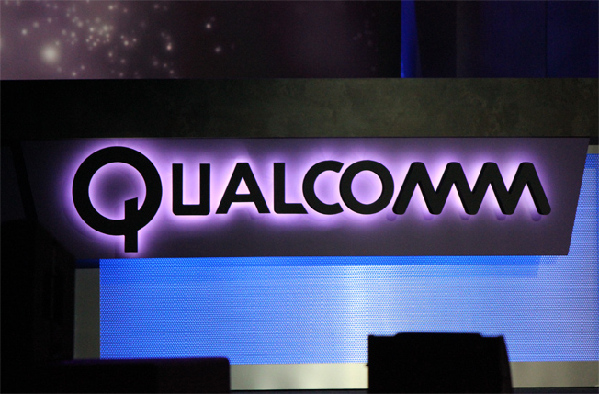How Qualcomm got involved in China's antitrust probes
- By Zhang Lulu
 0 Comment(s)
0 Comment(s) Print
Print E-mail China.org.cn, October 16, 2014
E-mail China.org.cn, October 16, 2014
|
Qualcomm's Beijing and Shanghai offices were investigated by the NDRC last November. [File photo] |
The top brass at Qualcomm Inc. have been busy travelling between the United States and China since the latter's antitrust authority launched a probe against the company ten months ago.
At the Davos Forum held in China's Tianjin this September, Qualcomm's Executive Chairman Paul E. Jacobs was bombarded with questions involving the ongoing investigation. His colleague, Qualcomm President Derek Aberle headed for Beijing on Sep. 12 to meet with China's pricing regulator, the National Development and Reform Commission, which had announced the day before that the case would soon enter the penalty stage.
How did Qualcomm, the world's chip-making juggernaut, get involved in China's anti-monopoly investigations?
The investigation
The NDRC launched a dawn raid on Qualcomm's Beijing and Shanghai offices last November.
According to Xu Kunlin, head of the anti-monopoly bureau of the NDRC, two American companies filed complaints against Qualcomm in 2009, followed by increased complainants last year.
Before that, the company was also under investigation by Japan, the European Union, and South Korea. The EU called off their probe, but Japan demanded that the company stop its monopolistic practices, while South Korea issued Qualcomm a US$208 million fine.
The announcement that China would begin its own investigation of Qualcomm drew the world's attention, as it touched upon the company's core business model.
The fearsome Qualcomm
The world's mobile phone chip market is currently valued between US$16 and US$19 billion, half of which is taken in by Qualcomm.
China Business News described the telecommunication industry's attitude towards Qualcomm as "fear," which not only from the company's competitors, but also from service providers and firms in the company's supply chain.
"We all think that charging the patent fees based on the whole device is a bullying act. The entire industry is motivated to sue them, but Qualcomm is powerful because of their patent," said an industry insider.
The company's revenue comes from both licensing patents and selling mobile phone chips. Mobile phone producers who use Qualcomm chips have to pay for both the chips and the patents, while communication device makers who build base stations have to pay the patent fees.
In China, apart from Huawei and ZTE, which use chips that they partly produce themselves, most mobile phone manufacturers use Qualcomm chips, which they must either buy directly or for which they must pay patent fees.
What the aforementioned insider called "bullying" is the company's core business model, namely, the fact that the company charges excessively high patent licensing fees for its patents. This is the factor that makes the probe most significant and may cause a global chain reaction.
Patent fees are usually calculated on the basis of where the patent is used in a device rather than on the basis of the whole device's value. For example, if a company owns a patent for electrical bulbs, they will charge 3 to 5 percent of the value of the part where the bulb is used instead of charging a part of the whole gadget's value. What Qualcomm does, however, is to charge a certain percent of the value of the entire device. For example, it charges five percent of the price of an iPhone despite the fact that the phone has many other components and functions.
"As mobile phones have more and more functions and their prices keep climbing up, the patent fees will rise, even though it is still the same chip," said a business insider.
Qualcomm's mode of charging patent fees has long been controversial. The company's sales revenue in 2013 was US$24.87 billion, 30 percent of which came from its licensing business. But when it comes to the company's profit, licensing fees contributed 87 percent of the total.
A source close to China's Ministry of Industry and Information Technology, the country's telecommunications watchdog, said that since many of the company's patents are standard-essential patents (patents that are a must for certain telecommunication manufacturers), it is easy for Qualcomm to dictate prices.
Many companies have leveled accusations against Qualcomm. During a closed-door meeting in August, the company became embroiled in a confrontation with a number of other companies, including Intel, Microsoft, Huawei, and Nokia.
"China's antitrust probe is in line with the global reaction," said the insider.
Qualcomm is built around its CDMA technology, which became the basis of the technical standard of third generation, or 3G, telecommunications. Any company that produces 3G base stations and mobile phones will have to pay Qualcomm's patent fees.
But unlike the 3G network which is dominated by Qualcomm, 4G technology includes both China's LTETDD (TD-LTE) and the LTEFDD used by mainstream carriers. China's Ministry of Industry and Information Technology issued operating licenses to the country's three major mobile telecommunications providers at the end of last year before issuing the trial permit for LETFDD in April, giving Chinese technology some opportunity to advance first.







Go to Forum >>0 Comment(s)